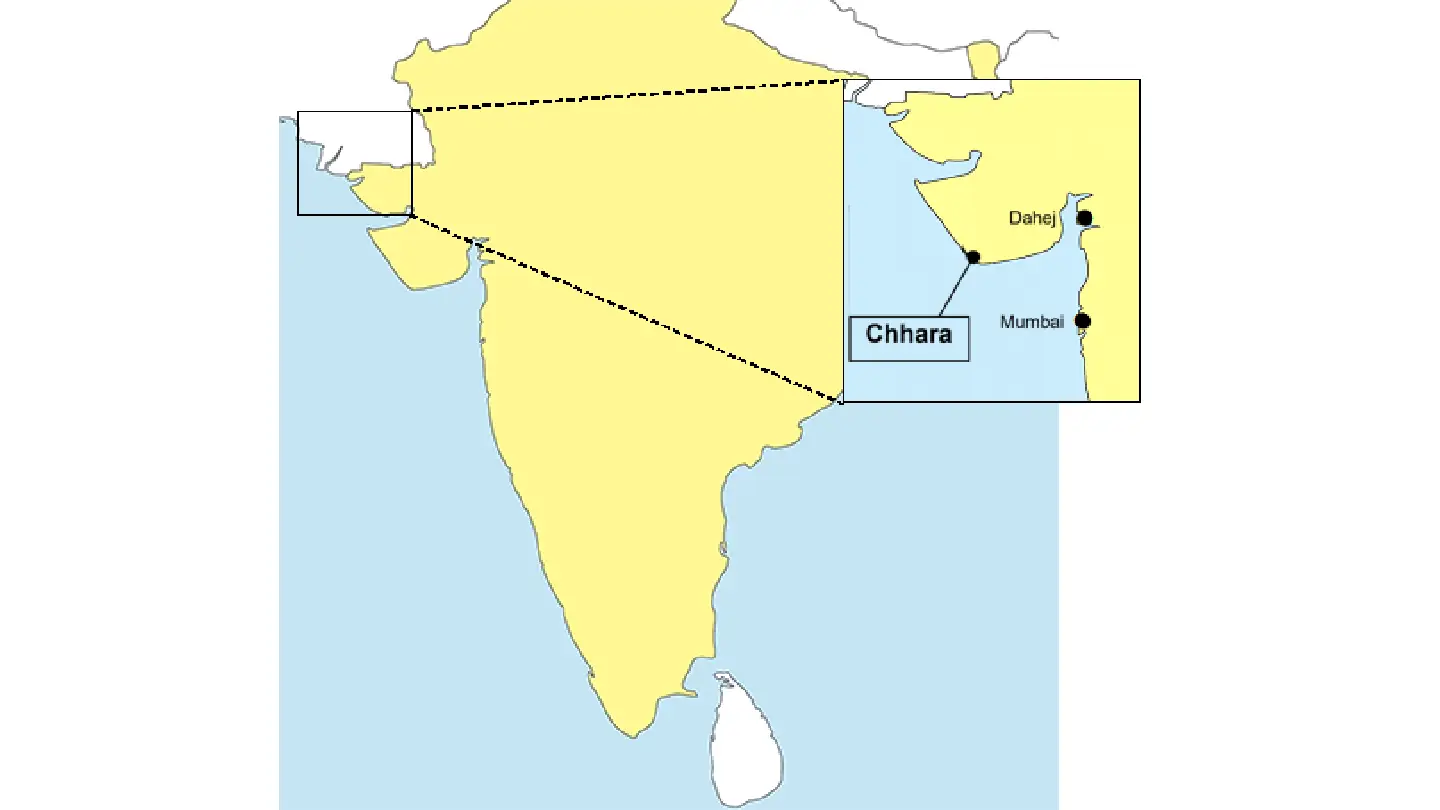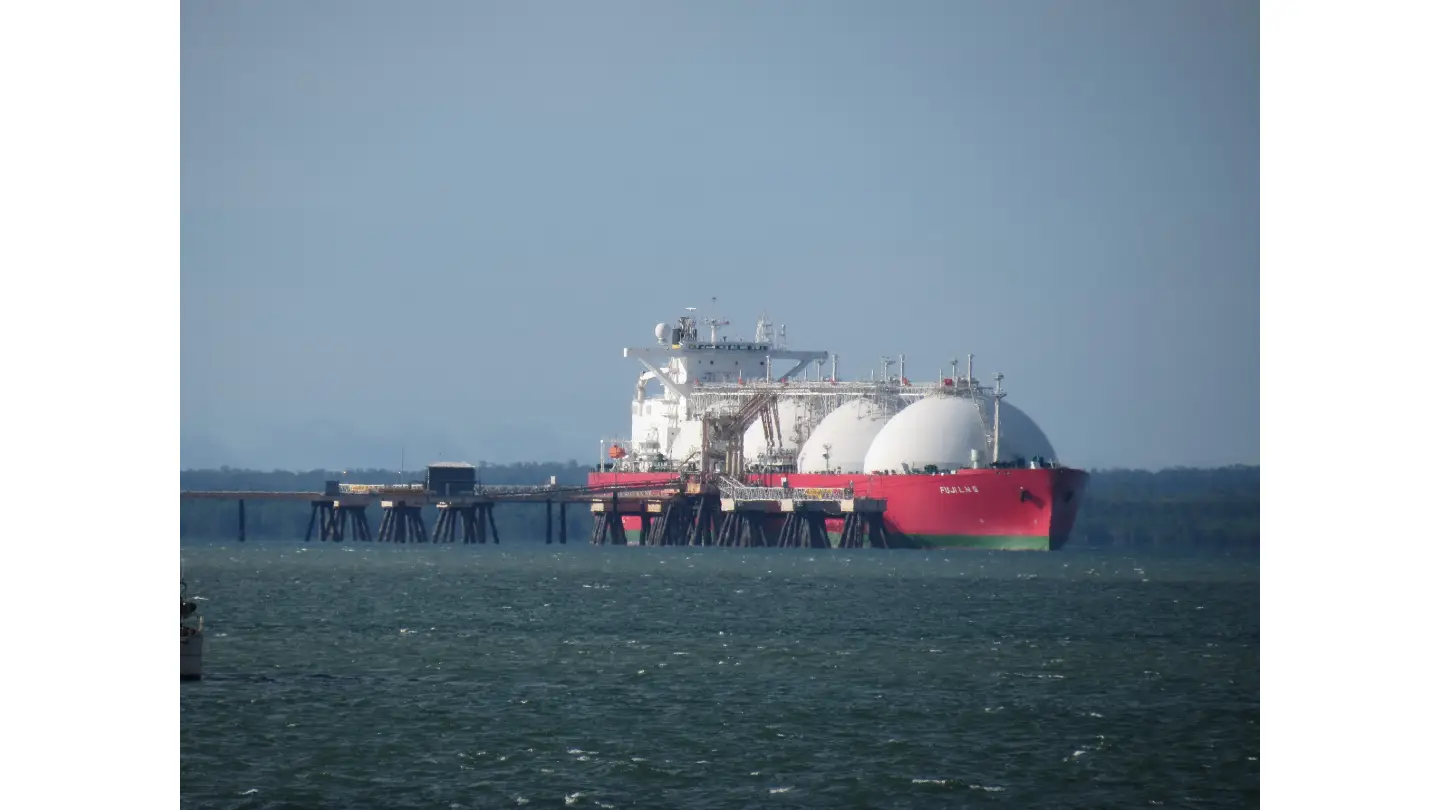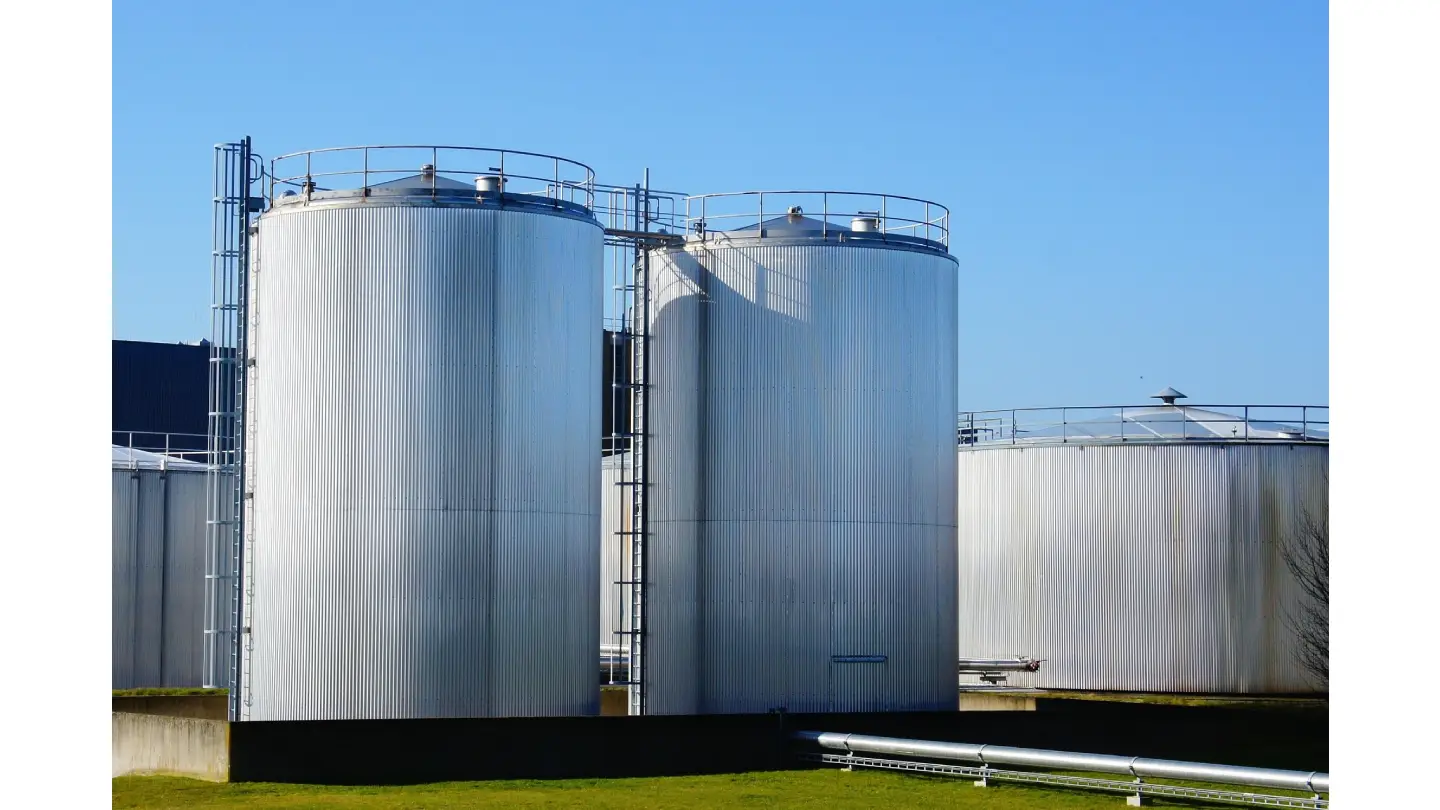Chhara liquefied natural gas (LNG) terminal is a greenfield LNG storage and regasification terminal located in the Indian state of Gujarat.
HPCL LNG Limited (HPLNG), a wholly owned subsidiary of Indian public sector undertaking Hindustan Petroleum Corporation Limited (HPCL), is the developer and operator of the terminal.
The terminal began operations in January 2025. The commissioning cargo was delivered by the ship Maran Gas Coronis, which berthed at Chhara LNG Terminal on 6 January 2025.
The development of the terminal involved an investment of INR47.5bn ($554m).
Chhara LNG Terminal has a regasification capacity of 5 million metric tonnes per annum (MMTPA). In a planned Phase 2 expansion, the project capacity is expected to be doubled to 10MMTPA.
In March 2025, state government-owned Gujarat State Petronet opened a natural gas pipeline connecting the terminal at Chhara with the gas grid. The pipeline has a capacity to transport 18 million standard cubic metres per day of natural gas.
The LNG terminal was conceived with the goal of supplying eco-friendly fuel suitable for cooking, industrial, and automotive uses. The development will also contribute to the Government of India’s target to raise the proportion of natural gas in India’s energy mix from 6% to 15% by the year 2030.
Chhara LNG Terminal Location
Chhara LNG Terminal is located in the village of Chhara, in Gir Somnath district of Gujarat. The site is around 8km from the National Highway NH-8E. The nearest airport is Diu Airport.
Overall, the terminal is spread over an area of 138 acres within the boundary of an all-weather multi-purpose Greenfield Chhara Port.
Chhara LNG Terminal Infrastructure
The terminal’s infrastructure components include facilities for receipt, unloading, storage and regasification of LNG and supply of re-gasified LNG to the gas grid.
The marine facilities include a 1.2km long jetty with unloading arms and pipeline. It can cater to LNG carriers between 80,000 and 266,000 cubic meter capacity. An additional jetty is expected to be built in the second phase of the project.
Tugboats guide the vessels carrying cryogenic LNG to the unloading jetty. Approach channel width is 300m.
The LNG is stored in tanks in the onshore terminal. It is transferred to the tanks using cooled unloading arms by using the carrier’s pumps.
On average, LNG is offloaded at a rate of 14,000 cubic meters per hour. Typically, an average-sized carrier can be fully discharged within a period ranging from 12 to 19 hours, depending on the ship’s capacity.
Furthermore, around three hours are necessary for the processes of mooring, cooling down, and connecting the unloading arms. Similarly, an additional three hours will be needed for purging the arms, disconnecting them, and unmooring the vessel.
There are two storage tanks above ground with steel inner tank and outer concrete tank. With a capacity of 200,000m3 each, the double walled full containment tanks at the terminal are among the largest LNG storage tanks in India.
The tanks are designed to store LNG at very low temperatures of -162° C. The regasification infrastructure, which is used to convert it back to natural gas, includes LNG Vaporizers, Air Heaters, BOG Compressor and HP Pumps.
Another facility was also constructed to enable loading LNG into tanker trucks, which will then transport the LNG to smaller distribution stations.
The project also features tie-in connectivity pipeline to carry the regasified LNG from Chhara Terminal to Londhpur Terminal.
The onshore terminal facilities and cryogenic transfer lines have a service-life of 30 years, while offshore marine facilities and LNG storage tanks can be operational for 50 years.
Contractors Involved
A joint venture of Japan’s IHI and Indian construction company Afcons won the Engineering, Procurement, and Construction (EPC) contract for the LNG storage tanks for the terminal. In July 2019, the Indian division of Japanese contractor Toyo Engineering secured the contract to deliver the LNG regasification plant.
The pipeline, which connects the Chhara LNG terminal to the national gas grid, was built by Ace Pipeline Contracts Private Limited.





